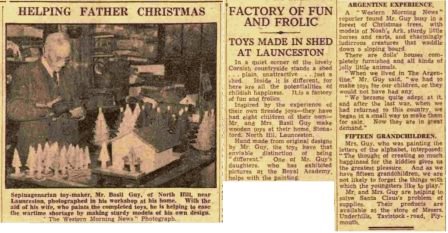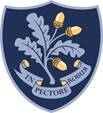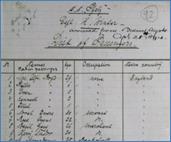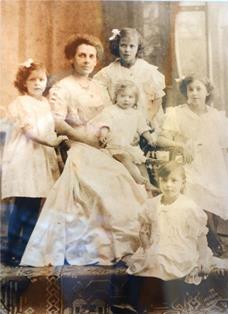
BASIL GUY and THE GUILD OF THE TREASURE SEEKERS |
|
|
“The Guild of The Treasure Seekers” made high quality children’s toys in a garden shed in Stonaford and sold them through a shop in Plymouth. The Guild also showed off their craft at various fairs. The Guild was the brainchild of Basil Gay who lived at Stonaford from around 1928 until his death in 1952. The Guild is interesting to North Hill residents as there are people in the parish today who remember it and people who worked there. Basil’s story is no less interesting, his family being remarkable in so many different ways. Just three months later the children became fatherless when Thomas died in November 1812. This left the three or four remaining children John, possibly Henry, Thomas and Nancy in the care of Mary. The work of The Guild was wonderfully recorded in this article in The Western Morning News, written in November 1941. Those of you with a connection with Tavistock may know the name of Basil Tudor Guy who was vicar there in the 1940s and 1950s. He will come into our story in due course but we must distinguish him from his father who was also named Basil Guy and is at the centre of this story. Basil Guy, the father, will be shown here as Basil Guy or Basil; his son will be shown as Basil Tudor Guy.
|
|
Links with William Morris of the Arts and Crafts Movement.The following has been extracted from the Forest School’s website: “Forest School is proud of its historical links with William Morris; champion of fine craftwork in furniture, fabrics, wallpaper and stained glass, writer, poet and pioneer of socialism.
“Morris was a boarder at Marlborough College when an organised rebellion there in November 1851 led to the decision that he leave the School that Christmas and study for his matriculation with a private tutor: the Reverend Doctor Frederick Barlow Guy, who was then Assistant Master at Forest before going on to become its Headmaster. “F. B. Guy’s influence over his talented pupil was great and a cordial friendship developed between them that lasted throughout their lives. “After F. B. Guy’s wife died in 1875, the School commissioned the firm of Morris & Co. to install a memorial window in the south transept of the School Chapel, which was designed by Edward Burne-Jones, William Morris’ lifelong friend and partner. Burne-Jones also designed a window for the eastern end of the north transept; both of these windows were destroyed by the blast of a flying-bomb in 1944. A fragment from one, depicting Rebecca, has been set in a Quatrefoil window in the North wall. A third window made by Morris & Co. still remains in the north transept behind the organ; it shows Samuel and Timothy and incorporates the distinctive grapes and flowers that are so typical of Morris’ designs. “Although Morris was never a pupil at Forest, his influence on the School remains strong. A banner made at the request of F. B. Guy, depicting an oak tree with the arms of the diocese of St Albans and the School motto ‘In Pectore Robur’, hangs in the Memorial Dining Hall today.” |
|
Basil Guy retired when he was about 60 years of age in the mid-1920s. After a spell living in London he took his family to live in Looe, Cornwall. His pension was paid by the company for which he had worked for so many years but his income had reduced to the point where he needed to find another source of income. Trading conditions before World War One had been profitable but political instability in Argentina, tariffs imposed by the UK government and a lack of acumen in the company resulted in Basil losing his investment and pension income. To fill the gap in his finances Basil planned to set up “The Guild of the Treasure Seekers”, a business making and selling children’s wooden toys. The premises in Looe were not suitable for making toys and Basil heard of a property in Stonaford to rent from the Rodd family. Stonaford had the benefit of a shed at the bottom of the garden and Basil chose to put this to good use as a place to manufacture toys. He moved the family to Stonaford and started The Guild. Over the years they did little to improve the property in case this might have induced their landlords to increase the rent. Initially the venture was just Basil making, painting and selling the toys as a one man operation. As the business grew his wife, Edith, and his daughters, Kathleen and Sheila joined in and were painting some of the toys. Stonaford had a large treadle circular saw and fretsaws to make the toys. Basil’s granddaughter remembers educational toys, maps, jigsaws, plywood farm animals, alphabets in boxes and particularly a ‘House that Jack Built’, with silhouettes, to be filled in with appropriate figures like a jigsaw. In the images below can be seen a bookcase and a dressing table for a doll’s house and two articulated tortoises. |
The banner image shows a box of doll’s house toys that were sold at an auction in 2017. It was by this image that Gillian Thomas was provoked to ask the question “What was The Guild of the Treasure Seekers?” and from whence this whole story unfolded. |



 “William Morris [pictured here] was born in Walthamstow on 24 March 1834, the same year that Forest School was established. The William Morris Gallery, housed in one of his childhood homes, is nearby. Morris’ father was a founding shareholder in the School and his brothers were all pupils here.
“William Morris [pictured here] was born in Walthamstow on 24 March 1834, the same year that Forest School was established. The William Morris Gallery, housed in one of his childhood homes, is nearby. Morris’ father was a founding shareholder in the School and his brothers were all pupils here.



 Basil and Edith’s children were Humphrey Guy (born 1896), Edith Dorothea Guy known as Dot (1898), Violet Guy (1899), Irene Guy (1901), Elizabeth Guy known as Betty (1903), Kathleen Guy (1907), Basil Tudor Guy (1910) and Sheila Guy (1912). In this photograph Edith can be seen with her first five daughters: Dot is standing at the back, Violet is on the right, Irene is on the left, Betty is kneeling and Kathleen is on her mother’s lap.
Basil and Edith’s children were Humphrey Guy (born 1896), Edith Dorothea Guy known as Dot (1898), Violet Guy (1899), Irene Guy (1901), Elizabeth Guy known as Betty (1903), Kathleen Guy (1907), Basil Tudor Guy (1910) and Sheila Guy (1912). In this photograph Edith can be seen with her first five daughters: Dot is standing at the back, Violet is on the right, Irene is on the left, Betty is kneeling and Kathleen is on her mother’s lap.